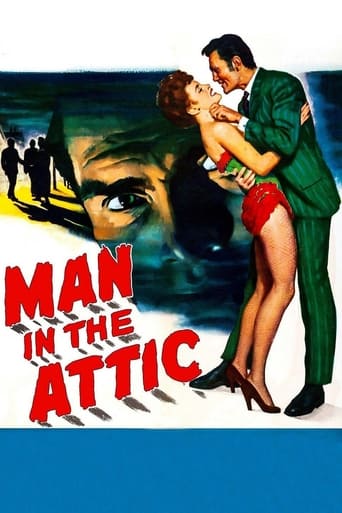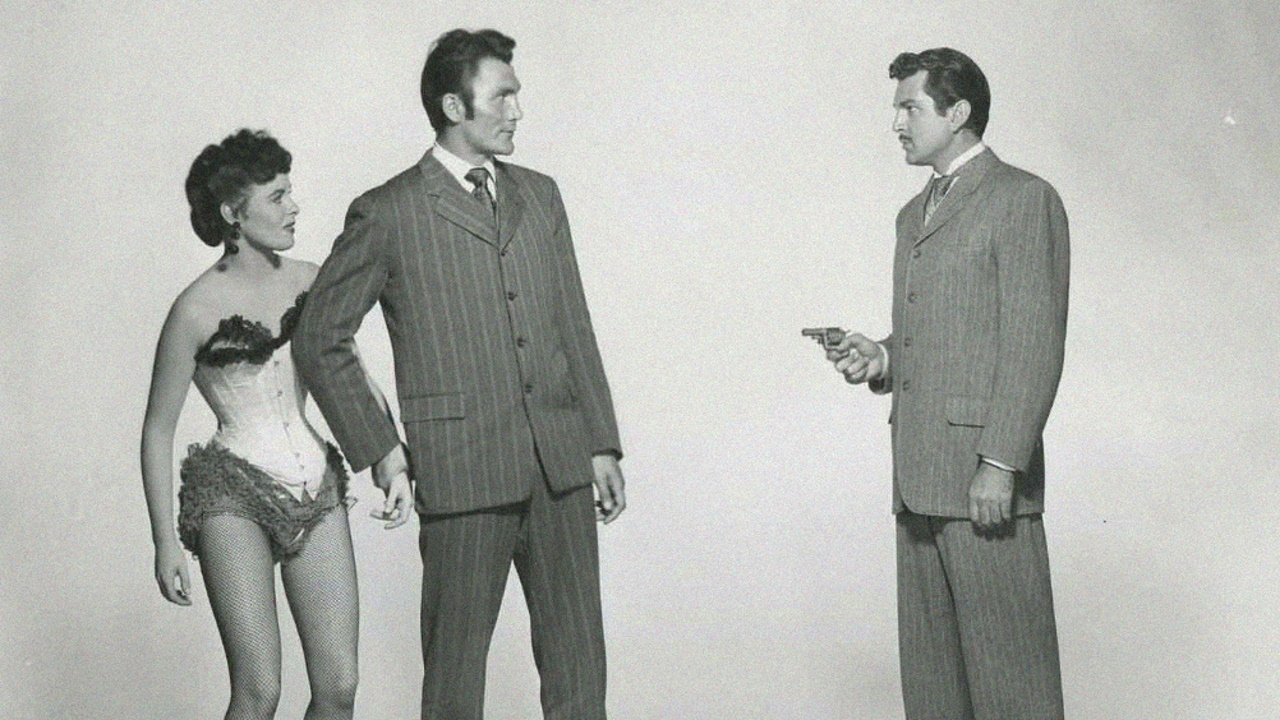Khun Kru Mark
Despite being made in 1953, it has the look and feel of a movie made in 1933! In addition, this movie set in London was clearly made on the back-lot of a studio in America. As if to hammer home the London 'look and feel' of the movie, even the suspenseful background music is a slow drawn out melody of Big Ben sounding off.What really makes it unwatchable (to English viewers) is the comic treasury of terrible British accents. No voice coaching here... just bizarre guesswork by the actors.Also (in my opinion) the giant Jack Palance is horribly miscast as a shy and socially awkward suspect in this Jack The Ripper yarn. He doesn't wield any kind of affinity with the role of the suspect and spends most of the time standing about the scenery looking lost or telling whoever will listen that he's a misunderstood, lonely outcast.Incredibly, this movie, about one of the world's most notorious killers, has been padded out with a few flamboyant song and dance routines! Wildly inappropriate and definitely NOT what you'd find anywhere in London in the late 1800s! It just looks and sounds silly.Other versions of this film are a lot more credible than this offering which seems to have been thrown together simply because Palance was bored and on contract and the studios were not being used for anything else.
joe-pearce-1
This film has been quite well-reviewed elsewhere here, so I will confine myself to making some pertinent comments left pretty much unaddressed elsewhere: For a film that depends so much on late-19th century English atmosphere, and somewhat achieves it visually, the accents of the six leading actors in it can be jarring, to say the least. Only Lester Matthews as a senior inspector really sounds British. Jack Palance sounds unambiguously American, as does Frances Bavier, while Rhys Williams as Bavier's husband sounds Welsh (which he was). Byron Palmer, who had only recently opened his mouth in TONIGHT WE SING to have Jan Peerce's voice come pouring out, was not a bad actor, but was a very poor choice for an English police inspector (especially next to George Sanders in the 1944 version) and also comes over as totally American. Constance Smith was Irish, but even she sounds more American than British. This wouldn't be important in a film with characters of diverse national backgrounds (think CASABLANCA), but a polyglot Jack the Ripper story is unconvincing.Many of the distance or action scenes in this film (the police climbing balconies, rooftops and the like) are actually taken right out of 1944's THE LODGER, and only portions of such scenes re-filmed to show the actors in this production, thereby contributing to its B-movie appearance.Constance Smith is quite good, and far more believable in her role than was Merle Oberon nine years earlier. Ms. Oberon came over as a bit too mature and certainly a bit too classy to be a Music Hall Queen, and she did not dance or high kick half as well as Ms. Smith.The Ripper is described as 'of average height', yet Jack Palance is anything but of average height and build and is of such huge presence that he would stand out in almost any crowd.Motivation is considerably changed between the 1944 and 1953 versions: In the earlier film, Cregar's character is psychologically forced to do the things he does by the death of his beloved brother, brought to ruin by a loose actress. In the 1953 version, he hates women of the streets (read prostitutes) because his mother was a truly nasty piece of work and ended up as one of them.Most amazingly, in the 1953 version, mention is made of his mother's name and a bright detective recalls that that was the name of Jack's first victim, and we then see the cops looking at a picture of her. Although this provides a tie-in to Slade, it is never again mentioned, nor is the fact that this would imply that Slade murdered his mother in the street to start off his killing spree (a possible shock to a 1953 movie-goer's system in that pre-Norman Bates era!). Also, we see a photo of a reasonably young woman, yet if Slade is, say, in his early 30s, she would have to have been at least 50.No mention is made of the fact that the two victims we do see and get to know a little are played by veteran actresses Isabel Jewell (memorable in everything she ever did) and Lillian Bond (a British-cum-American leading lady of the 1930s who was Melvyn Douglas's love interest in the original THE OLD DARK HOUSE). The latter character, who had starred at the Music Hall where the Smith character is now achieving much success, is not nearly as well defined as in the 1944 version.In the final chase through the streets, care has not been taken to disguise the fact that the driver of Slade's horse and carriage bears absolutely no resemblance to Jack Palance.Palance is truly excellent in this, yet the somewhat 'hammier' (not meant pejoratively) performance by Laird Cregar seems more memorable, if only for the earlier film's extraordinary 'heavy-breathing' sequence (sans music or any other sound) from Cregar when he is, as they say, cornered like a rat.As everyone agrees, the songs heard here are both out of place for this story, and out of fashion for its period, but so were the ones in the 1944 version. The whole thing would have made more sense and been more believable had Lily been an actress in, say, an Oscar Wilde play, rather than a Music Hall star.Despite the accent problem and a lack of true suspense throughout, it is certainly enjoyable to be reminded of just how well Jack Palance was doing at the time (think of the evil hired gun in SHANE, the actor pushed to murderous intent in Joan Crawford's SUDDEN FEAR, and only a bit later, the crushed actor in THE BIG KNIFE) and to see him here in one of his less well-remembered films from that period.
jarrodmcdonald-1
Jack Palance is perfectly creepy and tormented in this highly atmospheric remake of THE LODGER. It certainly is a tour-de-force for him, no other way to describe it. I think his Ripper is much sexier than Laird Cregar's in THE LODGER. It is a lot easier to imagine (to "see") the repeated violent sex acts that are no doubt occurring just off-camera. Palance makes it seems like frustration getting its high-voltage release. Cregar, as fine an actor as he was, does not even come close to suggesting that. As a result, I think Palance's version is much more tortured and ultimately more sympathetic. I also like Frances Bavier, pre-Mayberry, who makes the woman of the house very no- nonsense, yet likable. She guides some of our impressions of the man staying in her home. When she trusts him, we trust him-- when she grows suspicious, so do we. So in some ways the story is told through her perspective. And the interiors are absolutely gorgeous-- Fox outdid itself with the set design in this 50s remake.
SzamarCsacsi
The third remake of the 1927 Hitchcock silent classic "The Lodger: A Story of the London Fog" introduces hardly anything new. It's almost a shot-by-shot remake of the previous version from 1944 called The Lodger. Most of the dialog is the same, and the characters as well.What this film does is it polishes the previous remake to make it a touch better, and it makes it seem slightly more logical. To me, Jack Palance does a better job as the lodger, not just acting wise, but also his charisma seem to fit the character more.Among the changes there is an added dog to the family, small bits and pieces were changed and the ending was made more plausible. I gave it 6 out of 10, similarly to the 1944 film, because although I do think this one is better, it's not original enough to receive more.


 AD
AD

